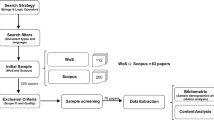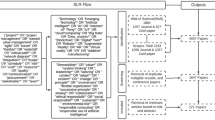Abstract
Most large software companies are involved in offshore development, now small- and medium-sized companies are starting to undertake global sourcing too. Empirical research suggests that offshoring is not always successful; however, only a few comprehensive failure stories have been reported. The objective of our study has been to understand why small and medium-sized companies terminate their offshore outsourcing relationships and what alternative arrangements they undertake afterwards. Therefore, we designed a multiple case study of four medium-sized Scandinavian software companies that have terminated their offshore outsourcing relationships. Our results are based on data collected through semi-structured interviews, informal dialogues and analysis of company documents. We found that all companies terminated their offshore contracts because of low quality of the software being developed. This was caused by an inability to build the necessary human and social capital. The companies reported challenges with domain knowledge, a lack of commitment of external developers, cultural clashes, poor communication and high turnover, which only amplified the problems. After termination all four companies changed their sourcing strategy from offshore outsourcing to offshore insourcing and partnerships. We conclude that successful offshore software development requires a change from a cost-driven focus to an intellectual capital-driven focus. To prevent continuous investments into contracts that are destined to fail, companies should look for signs of escalating commitments and terminate relationships that cannot be corrected. Those companies that choose outsourcing shall also take into account that mismatch between the size of the offshore contract relative to the vendor may have a negative effect on a relationship.




Similar content being viewed by others
Notes
Moe was involved in the Nemo, Dorado and Guppy cases, Smite was involved in the Dolphin and Dorado cases, Hanssen was involved in the Guppy case and Barney was involved in the Nemo case
References
Argyris C, Schön DA (1996) On Organizational Learning II: Theory, Method and Practise. Addison Wesley, Reading
Aron R, Singh JV (2005) Getting offshoring right. Harv Bus Rev 83(12):135–143
Barney HT, Moe NB, Low G, Aurum A (2009) Indian Intimacy ends as the Chinese Connection Commences: Changing Offshore Relationships. Paper presented at the Third Global Sourcing Workshop, Keystone CO, USA, 22–25 March
Battin RD, Crocker R, Kreidler J, Subramanian K (2001) Leveraging resources in global software development. IEEE Softw 18(2):70–77. doi:10.1109/52.914750
Boden A, Nett B, Wulf V, Soc IC (2007) Coordination practices in distributed software development of small enterprises. Second IEEE International Conference on Global Software Engineering, Proceedings
Boden A, Nett B, Wul V (2010) Operational and strategic learning in global software development. IEEE Softw 27(6):58–65
Bontis N (1997) Royal Bank invests in knowledge-based industries. Knowledge Inc 2(8):1–4
Bontis N (1998) Intellectual capital: an exploratory study that develops measures and models. Manag Decis 36(2):63–76
Braun V, Clarke V (2006) Using thematic analysis in psychology. Qual Res Psychol 3(2):77–101. doi:10.1191/1478088706qp063oa
Bush AA, Tiwana A, Tsuji H (2008) An empirical investigation of the drivers of software outsourcing decisions in Japanese organizations. Inf Softw Technol 50(6):499–510. doi:10.1016/j.infsof.2007.08.006
Carmel E, Abbott P (2007) Why ‘Nearshore’ means that distance matters. Commun ACM 50(10):40–46. doi:10.1145/1290958.1290959
Carmel E, Tjia P (2005) Offshoring information technology: Sourcing and outsourcing to a global workforce. Cambridge University Press, NY
Damian D, Moitra D (2006) Global software development: How far have we come? IEEE Softw 23(5):17–19
Dedene G, Vreese J-PD (1995) Realities of off-shore reengineering. IEEE Softw 12(1):35–45. doi:10.1109/52.363167
DeLone W, Espinosa JA, Lee G, Carmel, E (2005) Bridging Global Boundaries for IS Project Success. Paper presented at the Proceedings of the Proceedings of the 38th Annual Hawaii International Conference on System Sciences (HICSS’05)
Ebert C (2007) Optimizing supplier management in global software engineering. In: Second IEEE International Conference on Global Software Engineering, Munich, GERMANY
Fayad ME, Laitinen M, Ward RP (2000) Software engineering in the small. Commun ACM 43(3):115–118
Gongla P, Rizzuto CR (2001) Evolving communities of practice: IBM Global Services experience. IBM Syst J 40(4):842–162
Hall T, Baddoo N, Beecham S, Robinson H, Sharp H (2009) A systematic review of theory use in studies investigating the motivations of software engineers. ACM Trans Softw Eng Methodol 18(3):1–29
Hanssen GK (2012) A longitudinal case study of an emerging software ecosystem: implications for practice and theory. J Syst Softw 85(7):12
Hanssen GK, Fægri TE (2006) Agile Customer Engagement: a Longitudinal Qualitative Case Study. Paper presented at the 5th International Symposium on Empirical Software Engineering (ISESE’06), Rio de Janeiro, Brazil, 21–22 September
Heeks R, Krishna S, Nicholson B, Sahay S (2001) Synching or sinking: global software outsourcing relationships. IEEE Softw 18(2):54–60
Hirschheim R, Lacity M (1998) Reducing information systems costs through insourcing: Experiences from the field. In: Watson HJ (ed) Proceedings of the Thirty-First Hawaii International Conference on System Sciences, Vol Vi: Organizational Systems and Technology Track. Proceedings of the Annual Hawaii International Conference on System Sciences pp 644–653
Hole S, Moe NB (2008) A case study of coordination in distributed agile software development. In: Software Process Improvement, pp 189–200
Keil M, Mann J, Rai A (2000) Why software projects escalate: An empirical analysis and test of four theoretical models. MIS Quarterly. p. 631–664
Kotlarsky J, Bognar L (2012) Understanding the process of backsourcing: two cases of process and product backsourcing in Europe. J Info Tech Teach Cases 2:79–86. doi:10.1057/jittc.2012.7
Lacity M, Willcocks L, Rottman J (2008) Global outsourcing of back office services: lessons, trends and enduring challenges. Strategic Outsourcing Inter J 1(1):13–34. doi:10.1108/17538290810857457
Langley A (1999) Strategies for theorizing from process data. Acad Manag Rev 24(4):691–710. doi:10.2307/259349
Laporte CY, Alexandre S, Renault A (2008) Developing international standards for very small enterprises. Computer 41(3):98–101. doi:10.1109/mc.2008.86
Lee AS, Baskerville RL (2003) Generalizing generalizability in information systems research. Inf Syst Res 14(3):221–243
Lunenburg FC (2010) Escalation of commitment: patterns of retrospective rationality. Inter J Manag Business Admin 13(1):1–5
McLaughlin D, Peppard J (2006) It backsourcing: from ‘make or buy’ to ‘bringing it back in-house. In: ECIS
Moe NB, Smite D, Hanssen GK. From offshore outsourcing to offshore insourcing: Three Stories. In: Global Software Engineering (ICGSE) (2012) I.E. Seventh International Conference on, 27–30 Aug. 2012. pp 1–10. doi:10.1109/icgse.2012.33
Nahapiet J, Ghoshal S (1998) Social capital, intellectual capital, and the organizational advantage. Acad Manag Rev 23(2):242–266. doi:10.2307/259373
Ó Conchúir E, Ågerfalk P, Olsson HH, Fitzgerald B (2009) Global software development: where are the benefits? Commun ACM 52(8):127–131. doi:10.1145/1536616.1536648
Oshri I, Kotlarsky J, Willcocks LP (2011) The handbook of global outsourcing and offshoring. 2 edn. Palgrave
Paulk MC, Weber CV, Chrissis MB (1999) The capability maturity model for software. In: El Emam K, Madhavji NH (eds) Elements of software process assessment & improvement. IEEE Computer Society, Los Alamitos, pp 3–22
Prikladnicki R, Audy JLN (2010) Process models in the practice of distributed software development: A systematic review of the literature. Inf Softw Technol 52(8):779–791. doi:10.1016/j.infsof.2010.03.009
Prikladnicki R, Audy JLN, Damian D, de Oliveira TC, Soc IC (2007) Distributed Software development: Practices and challenges in different business strategies of offshoring and onshoring. Paper presented at the Second IEEE International Conference on Global Software Engineering, Proceedings
Rottman JW (2008) Successful knowledge transfer within offshore supplier networks: a case study exploring social capital in strategic alliances. J Inf Technol 23(1):31–43. doi:10.1057/palgrave.jit.2000127
Rus I, Lindvall M (2002) Knowledge management in software engineering. IEEE Softw 19(3):26–38. doi:10.1109/ms.2002.1003450
Sabherwal R (2003) The evolution of coordination in outsourced software development projects: a comparison of client and vendor perspectives. Inf Organ 13(3):153–202. doi:10.1016/S1471-7727(02)00026-X
Sahay S, Nicholson B, Krishna S (2003) Global IT outsourcing: software development across borders. Cambridge Univ. Press
Sato DT, Corbucci H, Bravo MV (2008) Coding Dojo: An environment for learning and sharing agile practices. Paper presented at the Agile, Toronto, Canada
Schultz T (1961) Investment in human capital. Am Econ Rev 51(1):1–17
Schwaber K, Beedle (2001) Agile Software Development with Scrum. Upper Saddle River: Prentice Hall
Šmite D, Wohlin C, Aurum A, Jabangwe R, Numminen E (2012) Offshore Insourcing in Software Development: Structuring the Decision-Making Process. J Syst Softw 86(4):1054–1067. doi: 10.1016/j.jss.2012.10.003
Šmite D, Moe NB, Ågerfalk PJ (2010a) Agility Across Time and Space: Summing up and Planning for the Future. In: Šmite D, Moe NB, Ågerfalk PJ (eds). Springer Berlin Heidelberg. pp 333–337. doi:10.1007/978-3-642-12442-6_23
Šmite D, Wohlin C, Galviņa Z, Prikladnicki R (2012) An Empirically Based Terminology and Taxonomy for Global Software Engineering. Empirical Software Engineering. doi:10.1007/s10664-012-9217-9
Šmite D, Wohlin C (2011) A whisper of evidence in global software engineering. IEEE Softw 28(4):15–18
Šmite D, Wohlin C, Gorschek T, Feldt R (2010b) Empirical evidence in global software engineering: a systematic review. Empir Softw Eng 15(1):91–118. doi:10.1007/s10664-009-9123-y
Staw B (1976) Knee-deep in the big muddy: A study of escalating commitment to a chosen course of action. Org Behav Human Perform 16(1):27–44
Stewart T (2001) The wealth of knowledge: intellectual capital and the twenty-first century organization. Nicholas Brealey, London
Tiwana A (2004) An empirical study of the effect of knowledge integration on software development performance. Inf Softw Technol 46(13):899–906. doi:10.1016/j.infsof.2004.03.006
Tobin J (1969) A general equilibrium approach to monetary theory. J Money, Credit, Bank 1(1):15–29
Whitten D, Leidner D (2006) Bringing IT back: an analysis of the decision to backsource or switch vendors. Decis Sci 37(4):605–621. doi:10.1111/j.1540-5414.2006.00140.x
Willcocks L, Hindle J, Feeny D, Lacity M (2004) IT and business process outsourcing: the knowledge potential. Inf Syst Manag 21(3):7–15. doi:10.1201/1078/44432.21.3.20040601/82471.2
Yin RK (2002) Case study research: design and methods. Sage, Thousand Oaks
Youndt M, Subramaniam M, Snell S (2004) Intellectual capital profiles: An examination of investments and returns. J Manag Stud 41(2):335–361
Acknowledgments
This research is funded partly by SINTEF ICT, and the Swedish Knowledge Foundation under the KK-Hög grant 2009/0249 and project BESQ+ under grant 2010/0311. We are grateful to the reviewers and Torgeir Dingsøyr who gave us valuable feedback.
Author information
Authors and Affiliations
Corresponding author
Additional information
Communicated by: Erran Carmel, Rini van Solingen, Rafael Prickladnicki, Filippo Lanubile
Rights and permissions
About this article
Cite this article
Moe, N.B., Šmite, D., Hanssen, G.K. et al. From offshore outsourcing to insourcing and partnerships: four failed outsourcing attempts. Empir Software Eng 19, 1225–1258 (2014). https://doi.org/10.1007/s10664-013-9272-x
Published:
Issue Date:
DOI: https://doi.org/10.1007/s10664-013-9272-x




